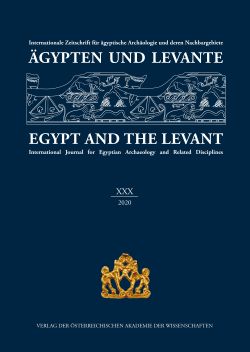
Ägypten und Levante 30, pp. 157-177, 2020/12/29
Internationale Zeitschrift für ägyptische Archäologie und deren Nachbargebiete
International Journal for Egyptian Archaeology and Related Disciplines
Jubiläumsausgabe – 30 Jahre Ägypten und Levante
Anniversary Edition – 30 Years of Egypt and the Levant
Results of archaeozoological analyses of the faunal material unearthed at Tell el-Retaba have already been published twice in Ä&L.2 Each time an attempt was made to elucidate the role of animals in the life of the inhabitants of the area in the time span from the Hyksos period until the Late Period. Successive excavation seasons delivered a large assemblage of bones which were subsequently examined and identified. This returned data which could be used to verify and add more details to the established facts regarding the meat diet, manner of procuring meat and exploitation of the potential of the ecological conditions in the Third Intermediate Period. The main sources of meat for the inhabitants of the settlement were animal husbandry and fishing. The profile of husbandry practices and the caught fish species slightly changed in time, probably as a consequence of changes in the natural environment.
Keywords: Faunal remains, meat consumption, animal economy, environmental conditions, Third Intermediate Period